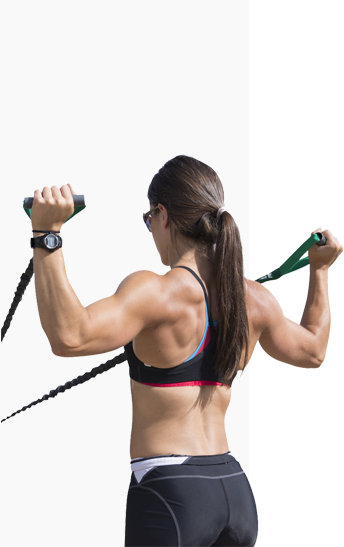How to Build the Powerhouse for Baseball Performance

The entire sport of Baseball hinges on power— which is the ability to exert force quickly. The best players can generate and transfer power with precision and control.
For both hitting and pitching, power largely comes from rotation through the core. For that reason much of strength training for baseball is focused on improving rotational ability. It is definitely not wrong to train the trunk and core this way, but that’s only part of the bigger picture.
Take a look at power generation for both pitching and hitting, and the fundamentals in optimizing its development.
The Key to Producing Power
In all of human performance, force production most always starts from the legs and then transferred to the trunk and upper extremities. This is especially true for baseball, but remember baseball requires more than just force production. The force must be produced quickly, which relies on the elastic components of the body.
To understand this elasticity – place your hand on your thigh and tap your index finger as hard and as fast as you can. This is the amount of speed and force produced by using only muscle contraction. Now pull the index finger back and let it snap on your thigh.
You have improved speed and force by utilizing the elastic properties of the human body. The principles of an effective swing or pitch are like this example.
Both hitting and pitching demand a fast rotational whip, that drives energy through the body. In strength and conditioning communities this elastic recoil is the called the serape effect. The better an athlete can master this, the more powerful they will be.
Check out the great Ken Griffey Jr. as a prime example. In his load, the back is almost completely turned to the pitcher, allowing him to create maximal separation between the lead hip and back
shoulder as he moves into his launch. This generates an explosive movement, like snapping a rubber band.

Build the Foundation for Power
In order to harness the serape effect for maximum power generation, the body must move in a precise sequence, a concept called segmental lag. This means each segment of the body must move slightly later than the preceding one—creating a whip-like action.
Weakness or poor coordination anywhere along this chain, results in decreased power, and often compensations to try and make up for the loss in force. These compensations tend to overload tissues and end up causing injury.
The first solution to this problem shouldn’t be more rotational work. It should be the development of strength and stability of the hips.
The initial requirement for segmental lag, is a stable axis to create rotation forces, better known as torque. Imagine pulling back a rubber band secured to a straw, it wouldn’t create near as much snap as a rubber band secured to the finger. The stable axis of rotation for both pitching and hitting comes from strong hips that control the whip-like action.
The second demand to generating power is creating forceful and fast hip rotation. Not only will this build more force, but it is essential to starting the chain of events. If the hips are slow to get around, everything that follows will either be out of synch or slow as well.

The Answer from Crossover Symmetry
Crossover Symmetry has been used by players for years as a strength program for the scapula stabilizers and rotator cuff. But as we’ve addressed above, this is only part of the puzzle.
The New CS Hip and Core program builds on the CS Shoulder System to develop the hip and core strength needed to optimize performance.
Using the Hip and Core Activation Program prior to playing, will help players maximize energy transfer, and thus improve power output. It’s also key to reducing the compensations at other joints for reduced injury risk.
Along with the Activation Program, the Hip and Core System comes with Strength and Plyometric Programs. This will further develop the links in the chain needed for explosive performance.
While there are many philosophies around hitting and throwing, one thing is undeniable: power generation will always be limited if there are underlying weaknesses in the hips or core.
By first correcting these weaknesses through activation and strengthening of the hips and core, you will get the maximum return on the other elements of your training program.
Learn more about about building high power players with our Hip and Core Guide








